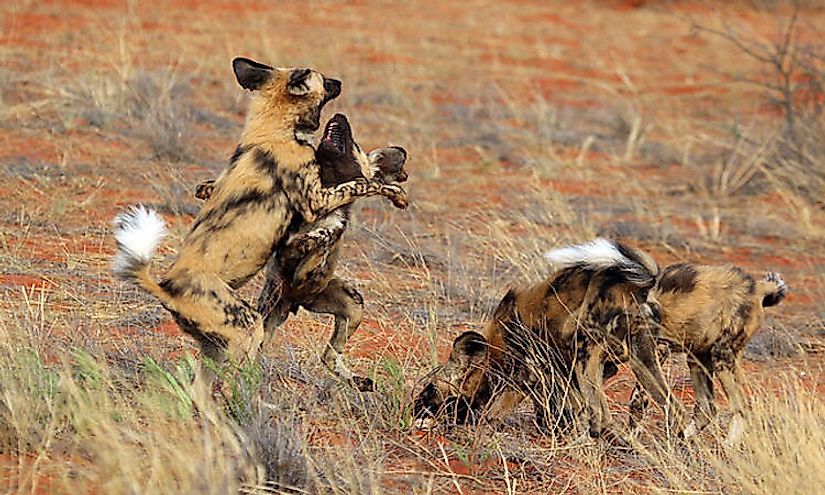Threatened Mammals of Sudan

The ecosystem of Sudan is characterized by diverse flora and fauna. The ecoregions of Sudan have endemic mammals, birds, and reptiles. While some of the mammals of South Sudan face the threat of natural extinction, the majority are threatened by human activities such as poaching, clearing of land for cultivation, and logging of wood. These threats have reduced the number of these mammals to the extent that some of them are listed as endangered species by the IUCN. There are nine threatened mammal species and one species that no longer exist in Sudan. The threatened mammals include;
Somali Wild Dog
Somali wild dog, scientifically called Lycaon pictus somalicus, is a species of African Wild Dog originating from Horn of Africa. The wild dog is smaller in body size and is covered with a shorter and coarser fur. The dentition of the Somali wild dog is weaker than those of the other African Wild Dog Species. Somali wild dog is characterized by large patches of yellow fur overlapping the black fur. The yellow parts are puff and not orange which is common with the Cape wild dogs. Somali wild dog is protected in the Horn of Africa countries including, Sudan, Somali, and Ethiopia. However, its survival in Sudan has been affected greatly by the decade-long Civil War.
Rhim Gazelle
Rhim gazelle, Gazella leptoceros, is also known as the slander-horned gazelle and is adapted to the desert conditions. The Rhim gazelle is highly endangered with the latest statistics suggesting that only 2500 are left in the wild. It is one of the palest gazelles existing today. The pale skin color enables it to adapt to the desert life by reflecting the sun’s rays rather than absorbing. Its hooves are enlarged thus enabling it to walk on sand easily. The male has slender and S-shaped horns while the female has thinner and less curved horns. Rhim gazelle is a nomadic species migrating across the desert in search of food and water. The high desert heat affects its feeding pattern limiting it to feeding in the morning and late in the evening when the temperatures are low. Rhim gazelle is highly endangered with very few species existing today.
Barbary Sheep
Barbary sheep, Ammotragus lervia, belongs to the species caprid which is found in the rocky mountains of the North Africa. The species have also been introduced in the North America and Europe. An adult Barbary sheep is between 80 cm and 100 cm tall and weighs between 40 to 140 kilograms. The young and growing Barbary sheep are sandy-brown in color but they darken with age. Their underbelly is slightly lighter while a dark line appears along the back. Their horns curve outwards, backward then inwards and are fairly smooth but wrinkle at the base as the animal matures. Barbary sheep inhabit arid mountainous areas and feed mainly on bushes and grass. They flee at the slightest indication of danger and runs by bouncing up and down to escape the predator.
Horn-Skinned Bat
Horn-skinned bat, Eptesicus floweri, belongs to the vesper bat species found in the subtropical dry shrubland. They inhabit mainly the thorny acacia thicket, dry grassland, and desert areas. Horn-skinned bat is listed as Vulnerable and facing the risk of extinction by the IUCN. They have weaker flight ability while their sizes range from 3 to 13 cm in length. The Horn-skinned bat are brown in color and roost mainly in caves either alone or as a colony. They are insectivorous feeding on desert insects.
Threatened Mammals of Sudan
| Threatened Mammals of Sudan | Scientific Name |
|---|---|
| Somali wild dog | Lycaon pictus somalicus |
| Rhim gazelle | Gazella leptoceros |
| Barbary sheep | Ammotragus lervia |
| Horn-skinned bat | Eptesicus floweri |
| Nubian wild ass | Equus africanus africanus |
| Dugong | Dugong dugon |
| Sudan cheetah | Acinonyx jubatus soemmeringii |
| Hippopotamus | Hippopotamus amphibius |
| Nubian giraffe | Giraffa camelopardalis camelopardalis |
| Addax | Addax nasomaculatus |







